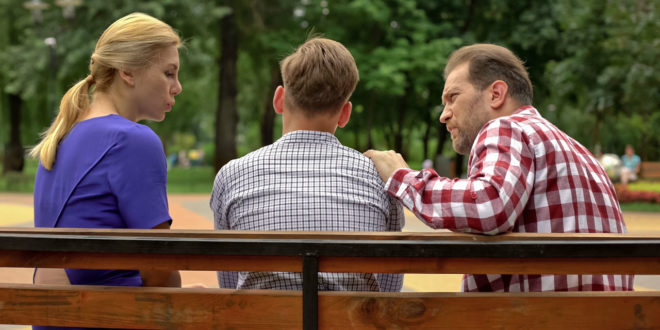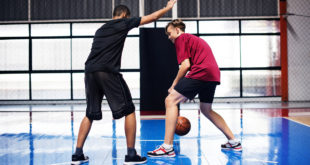This article focuses on prevention. Treatment is a completely different issue.
One of the things associated with lowering the risk of youth involved in high-risk behaviors (sex, drugs, etc.) is high self-esteem. What is self-esteem? If kids need it, we had better discuss how to get it and find it.
What Is Self-Esteem?
Understanding self-esteem can be confusing, so let’s take it slow and repeat it a couple of times.
Self-esteem is a person’s perception that other people believe they have value. Let’s do that again. If you believe that other people think you have value, then you will, in turn, believe that you have value. We get our self-esteem from other people. Without other people in our lives, we fail to sense that we have value.
Self-esteem is actually your attitude about yourself. It’s a person’s estimation of how capable and worthwhile they are. It isn’t pride, it isn’t conceit, nor is it a boastful, over-inflated opinion about a person’s own ability. All of these are actually signs of low self-esteem. People with positive self-esteem generally perceive themselves realistically. They understand their strengths and are typically ready to admit to their weaknesses. People with positive self-esteem are not ones to compare themselves to others or devalue the success of those around them.
You can generally identify people with positive self-esteem by their ability to make eye contact, express their feelings and opinions politely and appropriately, and they are likely to take advantage of opportunities to develop themselves further.
The Value of Mentoring
Self-esteem is not the only thing that young people need to avoid high-risk behaviors, but it’s important, and it plays a role in the prevention of these behaviors among young people and adults. We all need people to demonstrate to us that we are valuable. People. That means you and me. We need to engage ourselves in kids’ lives so they can see they are valuable to us. It is our responsibility.
Mentoring is an example of how people demonstrate to youngsters their value. Kids who are mentored are at much less risk for engaging in high-risk behaviors. To a young person, a mentor is someone who becomes involved in the lives of youngsters. The time spent may just be to talk, maybe eat ice cream, walk along a river or park, or maybe connect over the phone for an hour or two each week.
A mentor is a friend: someone who cares and who communicates. After having developed a strong relationship with a youngster, a mentor is a person who can then be someone that youngster can go to for strength, conversation, and discussion. They become someone the kid(s) can go to for advice—or at times with sensitive questions.
Mentoring Program
Big Brothers and Sisters of America is a well-known mentoring program that pairs adults with kids as friends for scheduled time together. It is a huge and well-known program that is probably available in your community. The value of this program has been measured and found to be highly effective. That is very highly effective. The California Mentor Foundation has also had positive results.
Report: Value In Mentoring Relationships
The United States Department of Justice reported research conducted to identify the value in mentoring relationships in the Big Brothers and Sisters Program of America. Their findings demonstrated that mentored youth were:
• 46% less likely to initiate drug use (70% less likely, if they were of a minority race)
• 27% less likely to initiate alcohol use
• 53% less likely to skip school
• 37% less likely to skip class
• Greater than 30% less likely to hit someone
• More confident in their school work
• Got along better with their family
The California Mentor Foundation (2000) reported that of 57,000 mentored youth:
• 98.4% stayed in school
• 85.25% did not use drugs
• 97.9% did not become a teen parent
• 98.2% did not join a gang
Relationships With Adults
Young people need strong, enduring relationships with adults. Synthesis of the research reported suggests that caring adults can play a strong and critical role in protecting students not only from involvement in violent acts but may have far-reaching benefits even in the area of substance abuse and early sexual activity.
Mentoring works. You can be a mentor, but to be one, you have to choose to become involved in young people’s lives. It is your responsibility to make that decision.
Every Child Has A Name
Another helpful strategy is to learn the names of the kids in your community. Sounds over-simplistic? Let’s see what happens when we do this.
I’ve heard a story, not a scientific study using strict research rules, of a tiny town in the Northwest where alcohol and teen pregnancy surfaced as a problem. The city fathers were concerned about their kids and often held town meetings to discuss what to do.
They started with the logical steps. Experts in teen pregnancy were consulted, and thousands of dollars were spent on purchasing a very fancy teen pregnancy reduction program. It looked great. The packets that came with the program’s purchase came with very colorful texts along with professionally produced and edited videos produced by some of Hollywood’s best filmmakers. The actors portrayed in the videos were famous and recognizable, which the kids had seen in the most popular movies. This was great. How could it miss?
A Popular Program
The kids loved the program and often talked about how neat it was and told their parents how much they enjoyed it. The school board, who was reluctant to spend thousands of dollars on purchasing this highly-acclaimed program, had been initially hesitant to purchase it due to the very high cost. Still, after they saw the kids’ reaction, there was both relief and satisfaction that something effective had been found. They really worried about their kids and wanted to be able to help them. Finally, they had found something that looked like it would work!
After a full year of teen pregnancy prevention education, the students remained enthusiastic. Interest had not diminished even a little bit. The kids really liked this program. One of the items that they liked the most was that the program came with fancy dolls. These dolls were lifelike, weighed about the same as an infant, and had clothing and realistic hair. The dolls had little computers installed to make them cry and even wet their diapers at timed intervals. The teacher would program the doll and give each of the students one to carry to class and take home for two full weeks.
The students were required to carry their babies (dolls) to class and take them home every day. Part of the assignment was that when the students went out, they had to take the dolls with them even after school hours. Along with the doll, they had to take a bag with dry diapers, a liquid that looked like a baby formula in a real baby bottle, and a bag with towels and other items necessary for a parent with a real infant.
The computer in the dolls made the babies cry at timed intervals. To stop this loud shriek, the student had to have a key handy that would stop the crying after inserting it into the proper place. The students would wake up two or three times every night to change diapers, feed their babies, or stop the crying. This was very real.
The school liked this program so much that they purchased it for a second year, and again the students seemed to really enjoy it. They especially looked forward to the class’s part when they were assigned their own babies to feed and care for.
Has the Program Worked?
After two years, the school board met, and a vigilant teacher asked a critical question. “I know how much the kids like the teen pregnancy prevention program, but I wonder if it has really worked. I wonder if fewer teen pregnancies have occurred since we started this program?” The registrar was asked to review how many young girls had dropped out of school for the past five years. She would also do some investigative work to see, if she could, how many of the dropouts were due to pregnancy.
At the next school board meeting, the registrar gave her report. The rate of teen pregnancy over the past five years seemed to be stable. The number of girls in that school who had quit due to pregnancy hadn’t changed when comparing dropouts before and after the program had been initiated. The board members just stared at each other for a few minutes. They were amazed. The kids had enjoyed the program. What had happened?
“Maybe We Should Get to Know These Kids”
After the pause, an older rancher, wearing cowboy boots with his feet propped up on a chair, said, “I don’t know what to do. It seemed like when I was a kid, everyone in town knew us, called us by name, and hooked into our lives. People were real back then, and these problems weren’t widespread. Maybe we should get to know these kids.”
Board members reminisced about their earlier days, and then someone came up with an idea. “Let’s hold a town meeting. That wouldn’t be hard. Only about twelve hundred people are living here. Let’s ask every adult in town to learn the names of every kid. Let’s greet them every time we see them and get to know them. Maybe that will have some effect.” The board members weren’t overly impressed with the idea but decided to give it a try. A town meeting was held, and the idea was presented. The town’s people seemed willing to make a go of it. What did they have to lose? It wouldn’t cost anything.
The Plan
So, this plan was put into place. Let’s imagine that your name is Abe. Follow this scenario. Here is a story about Mike and Abe (remember you are Abe).
When you see a kid at the store, stop for a second, and ask their name. “Hey, I’ve seen you around but don’t know what to call you. What’s your name?” “My name is Mike.” “Nice to know you, Mike.” “My name is Abe.” Can you imagine yourself doing that?
After that, it’s simple, “Hi, Mike.” Nothing to it. One afternoon you walk out of the hardwood store, and there stands Mike with a beer can in his hand. Abe said, “Hi, Mike.” Mike quickly puts the beer can behind his back. He doesn’t know why, but he feels nervous holding a beer with Abe looking at him. Mike was uncomfortable, and Abe could tell. Something had happened. Just by learning Mike’s name, a relationship had started. With that relationship came a little bit of commitment. Mike didn’t want to disappoint Abe; he seemed so nice. Abe didn’t scold Mike; he actually didn’t say a thing. He smiled, as always, and went on with his business.
Decreasing Drop-Out Rates
Several months after the town started on their effort to learn the local kids’ names, another town meeting was held. There was an enthusiastic buzz in the room. People couldn’t wait to tell their stories, and every person in the room seemed to have one. People told of the relationships they had developed with youngsters in town that started by just learning their names.
At a school board meeting a couple of years later, the registrar mentioned something interesting. “It looks like the number of school dropouts has decreased for some reason. I did some digging of my own, and it actually looks like the number of girls who quit school due to pregnancy has decreased.” There were still a few pregnancies among the students, but the improvement was obvious. “Do you think that this has something to do with the town people learning the names of the kids?”
What happened in that little town was that the benefit of social support — relationships developed by just learning kids’ names — was starting to show up in the numbers of high school-aged girls who were getting pregnant. The police chief mentioned that the number of arrests for drug use among young people had also decreased in the previous two years.
The Power of Social Support
Social support, relationships with others, a network of people who care or love is very powerful. And it doesn’t take much effort or cost any money. And that’s what inspires self-esteem, a sense that kids have value, and starts a couple of the elements that can lead to effective prevention from high-risk behaviors. Does that sound too simple? Sure it does. But, aren’t you glad that some of the elements of effective prevention are so simple?
Let’s start by learning the names of all of the kids in our communities. Let’s make those relationships happen and see where the journey goes.
If you liked this, you might also enjoy Mentor Men | Why All Teenagers Need Non-Parent Mentors
Dr. Gary Hopkins writes from the Pacific Northwest.
© 2002 - 2025, AnswersForMe.org. All rights reserved. Click here for content usage information. Answers for Me Support & encouragement for every-day life
Answers for Me Support & encouragement for every-day life



